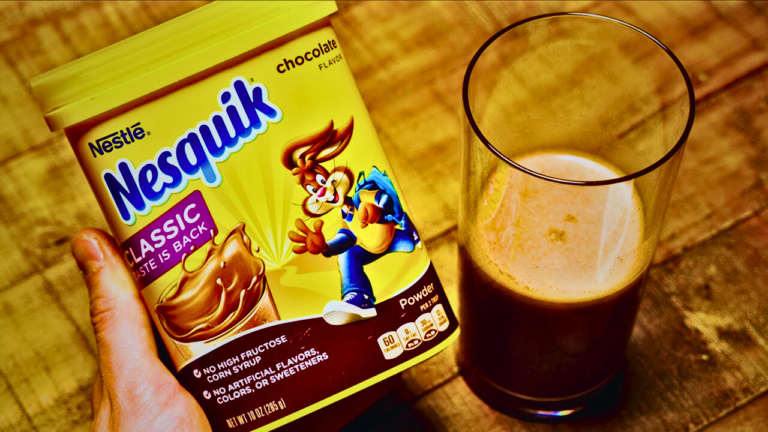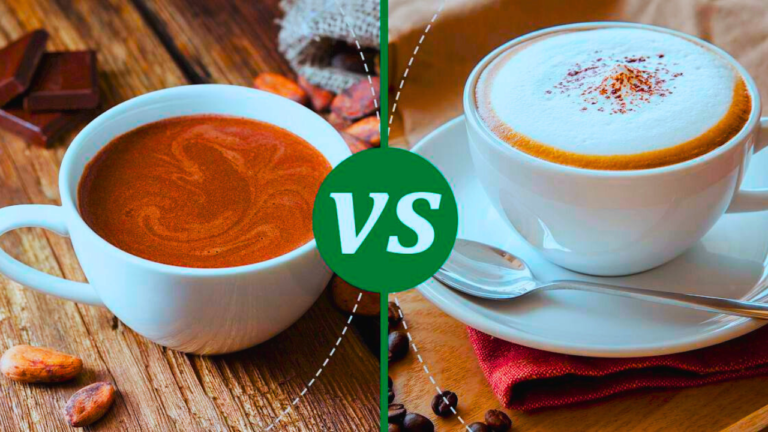Can I Heat Up Almond Milk For Hot Chocolate?
As winter looms on the horizon, the insatiable craving for a warm, comforting mug of hot chocolate often makes its way into many individuals’ evening routines. Those familiar with the diverse palette of dairy substitutes might wonder, “Can I heat up almond milk for hot chocolate?” Today, we delve into the complexities surrounding this seemingly straightforward query, deciphering the essentials, including nutritional value, heating effects, tasteful comparisons, and the potential issues one might encounter during the heating process.
- Nutritional Value: Unraveling the nutritive capacity of almond milk—protein, calcium, vitamin D, and more.
- Heating Effects: Investigating how heat alters the properties of almond milk.
- Heating Methods: Reviews the best ways to warm up almond milk without compromising its integrity.
- Potential Issues: Indenting into challenges that might occur when using almond milk for hot chocolate.
- Taste Comparisons: Comparing the taste of heated almond milk in hot chocolate to other popular alternatives.
“While the concept appears rather simplistic, heating almond milk for hot chocolate involves an intricate process marred with various considerations. Little do the casual onlookers acknowledge, for each step undertaken when steaming this nutty substitute culminates into a rich, aromatic beverage that radiates comfort through every sip.”
Let us begin our exploration through these intriguing layers that shape the interaction between almond milk and hot chocolate.
What is the nutritional value of almond milk?
Almond milk, as a member of the ever-expanding family of plant-based milk substitutes, has indeed staked its claim in the health-conscious arena. Often championed for its relatively lower calorie content compared to traditional dairy milk, a standard serving of unsweetened almond milk contains only a modest 60 calories, instantly making it the darling of many diet plans. Arguably, though, these accolades for almond milk are not undeserved. We must remember to dive deeper into the nutritional matrix it offers to gauge a comprehensive picture of its health benefits.
Unsweetened almond milk, apart from its favorable caloric profile, is also low in carbohydrates—typically only about 2 grams per serving, of which 1 gram is dietary fiber—and contributes to maintaining good digestive health. This lower carbohydrate content contributes to its having a minimal impact on blood sugar levels, evoking a favorable nod from those adhering to low-carb or keto diets.
Let us now turn our attention to the starring act: almonds themselves. Almond milk inherits several nutrients from its almond parentage. Containing a pleasing proportion of nutrients like Vitamin E, a potent antioxidant, and calcium, an imperative for bone health, it is not hard to see why almond milk has garnered popularity over the years. Although it may fall behind in protein compared to cow’s milk, providing only 1 gram per serving, whereas cow’s milk serves up 8 grams, it holds its own by providing healthy fats, specifically monounsaturated fats. A regular uptake of these fats has been linked to a reduction in heart disease and better sugar control among diabetics.
However, not all almond milks are created equal. Flavored or sweetened almond milks, while often more palatable to some taste buds, harbor a higher caloric and sugar content. Thus, while they too provide many of the above-mentioned nutritional benefits, the additional sugars can tip the health balance and potentially annul some of these benefits, especially for those carefully monitoring their sugar intake.
Thus, almond milk, in particular unsweetened variants, combines an enviable low caloric content with a healthy array of nutrients, securing its place as a versatile and beneficial choice that plays well with a range of dietary preferences and restrictions.
How does heating affect almond milk’s properties?
The characteristics of almond milk can be influenced by the process of heating, depending on the rise in temperature and duration of exposure to heat. Similar to conventional dairy milk, almond milk is susceptible to alterations when subjected to heating, though with dissimilar results because of its plant-based nature.
One of the pivotal aspects of almond milk that may be affected is its consistency. Almond milk consists of almonds and water in its simplest form, and in numerous commercially available versions, you may find stabilizers or emulsifiers such as lecithin added to prevent the separation of water and almond puree. When heated, especially for a prolonged period, you may observe a change in the texture and consistency—the separation of solid almond particles from the water—leading to a somewhat grainy texture.
On a nutritional front, heating almond milk does not bring about a significant loss of nutrients, but it may slightly reduce the content of certain heat-sensitive vitamins like vitamin E and B-complex vitamins. Yet, the decrease is not consequential enough to devalue the worthy nutritional contribution of almond milk to our diet.
Moreover, the taste of almond milk may seem subtly altered when heated. This is subjective and dependent on individual palates. Some people may experience enhanced sweetness, particularly if the almond milk is sweetened or naturally high in sugars. This sweetness can actually complement the flavor of hot chocolate well, creating a well-rounded and deeply satisfying taste sensation.
In essence, while heating almond milk might bring about slight changes in texture, taste, and minor alterations in nutrient content, these are not overly significant to merit concern and certainly do not impede its use in the creation of delectable hot beverages such as hot chocolate.
What are the best methods to heat almond milk?
When it comes to heating almond milk for hot chocolate, several methods are effective and maintain the integrity of the nutritious plant-based alternative. The diversity of these processes attests to the versatility and adaptability of almond milk, underscoring why it has become a widely respected and embraced dairy substitute in the contemporary culinary landscape.
- Microwave: This method is known for its speed and convenience. To heat almond milk in a microwave, pour the required quantity into a microwave-safe mug, leaving enough room for the liquid to possibly expand upon heating. Microwave the almond milk on high for 1-2 minutes, depending on your microwave’s power and the quantity of almond milk. Stir at 30-second intervals to ensure it heats uniformly.
- Stovetop: Renowned for its ability to fuel the taste of almond milk to the fullest, this method affords one better control over the heating process. Pour the almond milk into a saucepan and heat over medium-low to medium heat. Constant stirring is highly recommended to avoid scorching the bottom of the pan and to ensure even heating. Once steam begins to rise—a signifier that almond milk has achieved an optimum hot temperature—pull it off the heat.
- Steam: This method—known for its success in cafes worldwide—is the best for those seeking frothy almond milk to top their hot chocolate. Professional baristas and home kitchen enthusiasts employ steam wands on espresso machines to accomplish the task. Start with chilled almond milk in a steam pitcher, insert the wand at a slight angle to generate a whirlpool effect, and activate the steam function. Once the volume of the almond milk doubles and the pitcher becomes too warm to touch, stop steaming.
Each of these techniques offers unique advantages, from the rapid heating of the microwave method to the controlled, gentle approach of stovetop heating. The steaming process, on the other hand, makes for a deliciously frothy, café-worthy hot chocolate. Like any skilled artisan or accomplished chef would advocate, one must choose the method that best suits their individual needs and expectations.
What are the potential issues when using almond milk for hot chocolate?
When hot chocolate enthusiasts seek to immerse themselves in the luscious experience of sipping warm cocoa, they may encounter a few considerations when incorporating almond milk into their ritual. One potential issue arises from the inherent characteristics of almond milk itself.
Unlike conventional milk, which naturally contains proteins that contribute to a creamy consistency when heated, almond milk lacks this protein structure. A direct consequence is that it tends not to froth as well, rendering a less creamy texture to the hot chocolate when compared to its dairy counterparts.
However, with the advent of technology and the ever-increasing popularity of non-dairy substitutes, some almond milk companies have begun enriching their products with additional protein to facilitate better frothing.
On the flip side, it’s worth noting that the lower fat content in almond milk, while beneficial from a health standpoint, may lead to a starkly lighter hot chocolate. This deprivation of fat results in a less full-bodied and indulgent hot chocolate, a departure from its traditionally decadent reputation.
To circumnavigate these potential issues, modifications to the hot chocolate preparation process can be beneficial. For example, using a higher concentration of chocolate or cocoa powder can maintain the flavor strength even in the absence of full-fat milk. Similarly, adding a thickening agent like cornstarch could help restore some of the lost body and richness.
Lastly, as much as one might be cautious, there’s always the inherent risk of overheating the almond milk. Subjecting it to high heat for prolonged periods can lead to a curdling effect—a far cry from the smooth, soothing consistency one might seek in a hot chocolate drink.
In conclusion, while there are potential issues when using almond milk for hot chocolate, one can mitigate these with thoughtful choices and simple tweaks in the preparation process.
How does the taste of heated almond milk compare to other milks in hot chocolate?
The flavor of almond milk, particularly when heated for a beverage such as hot chocolate, holds a unique allure that distinguishes it from its counterparts. A staple in many modern kitchens, almond milk is known for its slightly sweet and nutty flavor, a stark divergence from the creaminess of dairy milk or the subtlety of soy milk.
Immersing one in a delectable experience, hot chocolate made with heated almond milk exhibits an earthy and slightly nutty profile that perfectly complements the rich cocoa. The pleasant sweetness of almond milk further adds an alluring nuance, reducing the requirement for additional sweeteners, a testament to its versatility.
“The aromatic essence intertwined with a whisper of sweetness, heated almond milk provides an unparalleled sensory scenario when included in the formulation of hot chocolate.”
When pitted against others, here’s how the taste of heated almond milk stands in comparison:
| Milk Variety | Taste commentary |
|---|---|
| Dairy Milk | While dairy milk provides a traditional, creamy, and rich base for hot chocolate, it lacks the distinctive touch brought by the sweet and nutty nuance of almond milk. |
| Soy Milk | Soy milk, being subtle and faintly sweet, keeps the spotlight firmly on the cocoa. However, it misses offering that added layer of flavor complexity that almond milk naturally provides. |
| Coconut Milk | Coconut milk provides a tropical overtone to the hot chocolate, which can either be appreciated for the interesting twist or seen as a flavor distraction, depending on personal preferences. |
Pros and cons aside, the ultimate choice revolves around an individual’s flavor preferences and dietary needs. We, as appreciators of the gastronomic world, celebrate the variations and complexities brought forth by these alternatives, among which heated almond milk continues to stand as an exceptional choice for a remarkable hot chocolate experience.
Conclusion
In the conclusion of our comprehensive exploration into the usage of almond milk in the preparation of hot chocolate, it’s evident that not only is this a viable option, but it can also present a unique flavor profile and a multitude of health benefits, making it a thoughtful choice for those who value their health and well-being.
Your decisions to heat almond milk should be guided by the understanding that moderate heat allows for the best preservation of its delicate nutrients while also providing the desired warmth needed to craft that perfect cup of luscious hot cocoa. It behooves us to remember that almond milk has a lower protein content than cow’s milk, which can prevent it from thickening during heating. Therefore, applying the advice provided on the best way to heat almond milk without causing unwanted alterations to texture can go a long way in creating a delectable hot beverage.
The potential issues—including possible coagulation under too much heat or curdling when left unattended—can be easily avoided with careful practice. Embracing these challenges is a testament to our pursuit of knowledge and a satisfying cup of hot chocolate. For those sensory aficionados, almond milk in hot chocolate not only delivers a refreshingly distinct taste but also contributes to peace of mind due to its ethical and environmental impacts, with almonds requiring less water to grow than cows need for dairy production.
In conclusion, heated almond milk presents a compelling alternative to traditional dairy as a base ingredient for hot chocolate. It is a decision that reflects an appreciation for unique flavors, concern for individual health and well-being, and a movement towards environmentally sustainable practices. With a few adjustments and careful heating, using almond milk for hot chocolate could be a rewarding experience for all of us. Engage in this exploration with an open mind, and savor the delightful variance that almond milk brings to your hot cocoa.
FAQs
Can I simply replace cow’s milk with almond milk in any recipe?
Typically, yes. Almond milk can be an ideal substitute for cow’s milk in many recipes, especially due to its lower calorie count and high nutrient value. However, one ought to consider the slight nutty flavour of almond milk, which might significantly alter the final taste.
Is it safe to boil almond milk?
Almond milk can be heated up to a boiling point, but experts advise against it as boiling might lead to separation. A more recommended method is to heat it gently over medium heat.
Can I froth almond milk for my hot chocolate or coffee?
Yes, almond milk can be frothed, although it might not froth as well as cow’s milk. Using a blend of almond and coconut milk should significantly improve the frothability.
Does heating change almond milk’s texture?
Heating almond milk can lead to changes in its texture, especially if it is boiled. There’s a risk of it becoming slightly grainy or creamy. It’s best to heat it gently to maintain its smooth texture.
Why does almond milk sometimes curdle in hot chocolate or coffee?
The curdling effect in almond milk is triggered by the hot, acidic environment of hot chocolate or coffee. However, this effect doesn’t imply that the milk is spoiled.
How often can you reheat almond milk?
It is generally not recommended to frequently reheat almond milk, as this could increase the risk of bacterial growth. A one-time reheat should be the ideal limit.
What is the optimum temperature for heating almond milk?
While there is no definitive answer to this, a temperature around 150°F to 155°F (or until hot to touch but not boiling) is generally considered optimal.
Is almond milk healthier than cow’s milk?
Both almond milk and cow’s milk have their own set of nutritional benefits. Almond milk is lower in calories and sugar and is packed with healthy fats, making it a viable option for individuals watching their calorie intake or those who are lactose intolerant. However, it is considerably lower in protein compared to cow’s milk.
Can you heat up almond milk in the microwave?
Yes, almond milk can be heated in a microwave in a similar manner to any other type of milk. However, be sure to stir the milk gently halfway through to ensure even heating and prevent the formation of hot spots.
Does almond milk cause flatulence or gas?
Unlike dairy products, almond milk is low in lactose, making it easier to digest and less likely to cause gaseous problems or lactose intolerance symptoms.

Welcome to the delightful world of “Hot Chocolate Brew,” where the art of crafting and savoring hot chocolate takes center stage. I am Smith Karen, your guide on this indulgent journey through the rich and velvety universe of hot chocolate. As a passionate enthusiast of this comforting elixir, I am thrilled to share my insights, recipes, and experiences with fellow connoisseurs and those eager to explore the diverse realm of hot chocolate.
At “Hot Chocolate Brew,” we believe that a steaming cup of cocoa has the power to warm not just your body but also your soul. Whether you’re a seasoned hot chocolate aficionado or a newcomer to the world of cocoa delights, our aim is to provide you with a delectable blend of inspiration, knowledge, and mouthwatering recipes.
Join me in uncovering the secrets behind the perfect cup of hot chocolate, from selecting the finest ingredients to experimenting with unique flavor combinations. From classic recipes that evoke nostalgic warmth to innovative twists that will surprise your taste buds, “Hot Chocolate Brew” is your go-to resource for all things cocoa-related.
Prepare to embark on a journey of indulgence, as we explore the nuances of this timeless beverage together. Get ready to elevate your hot chocolate experience and make every sip a moment of pure, chocolaty bliss. Cheers to the joyous world of “Hot Chocolate Brew”!







